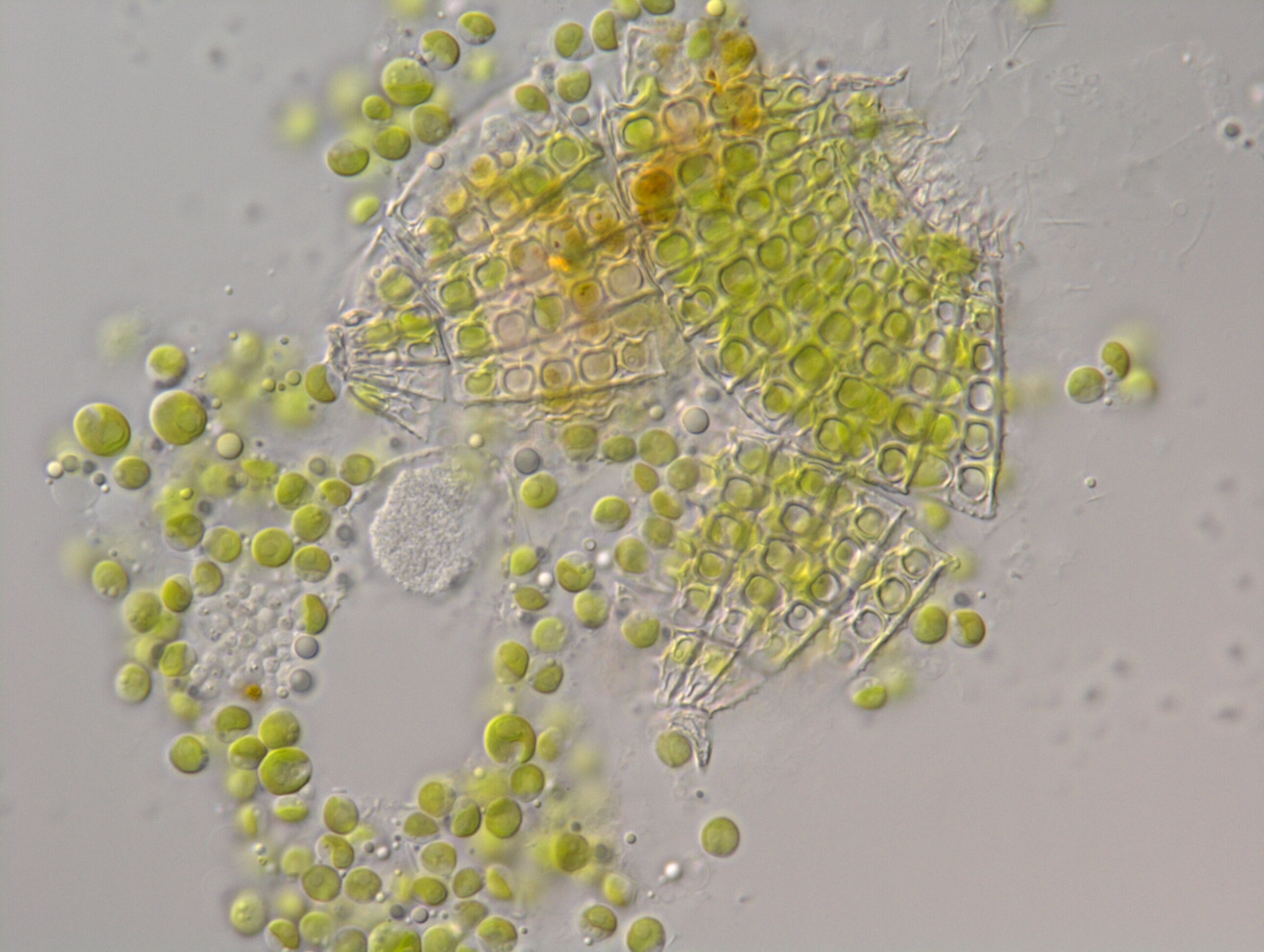
Freshwater endosymbiotic algae and their ciliate hosts: morphology, phylogeny, ecology
In aquatic ecosystems, we find many unicellular eukaryotes that live in symbiosis. Such mutualistic relationships exist between algae and ciliates and are called mixotrophy as the ciliates actively ingest food (heterotrophic nutrition mode) and get photosynthetic products from their algal partner (autotrophic lifestyle).
The algae in turn receive nitrogen compounds and CO2 from their host. For ciliates, mixotrophy can be considered as advantage at times of low food supply or under oligotrophic conditions and these ciliates are also found in more nutrient-rich oxygen-depleted areas of a water body. Naturally in lake plankton, at times assemblages composed of more than 20 mixotrophic species appear and may account for >25% of the total ciliate abundance.
While ciliates can be characterized relatively easy from their nuclear arrangement and ciliary pattern, the symbiotic algae lack specific characteristics. So far, these endosymbionts have been studied mainly by light and electron microscopy and have been identified at the generic or group level only. Based on morphology, the symbionts have been designated as Chlorella, Chlorella-like or Zoochlorella. Recent molecular studies have confirmed that the endosymbionts isolated from different ciliates and invertebrates are polyphyletic and belong to different lineages. Comparative studies of ciliates and their endosymbionts using an integrative approach, i.e., molecular phylogeny of SSU, ITS, and large subunit (LSU) rDNA sequences including secondary structures and morphology of both symbiotic partners is still missing for most free-living ciliates. Moreover, beside the morphological and genetic information on both the algal and the ciliate partner also ecological information is essential to understand their importance and role in aquatic microbial food webs.
Another aspect of the symbiosis is that outside their host, endosymbiotic green algae can be infected by a specific group of Chlorella-viruses. We propose four hypotheses to clarify: the flexibility of the host-symbiont system (H1) and the environmental parameters that influence the establishment of a symbiosis (H2), the origin of the symbiosis for the model ciliate Paramecium bursaria (H3) and the role and specificity of the Chlorella-viruses (H4).
The novel approach and strength of this study is the combination of the three scientific fields of phycology, protistology and virology and we believe devoutly to provide new insights into the relationship among ciliates and their symbiotic algae. To test our hypotheses, we will apply culture-dependent and culture-independent approaches. As the nature of symbioses is important to understand, our results will contribute not only to the field of protist research but to symbiosis in general.

